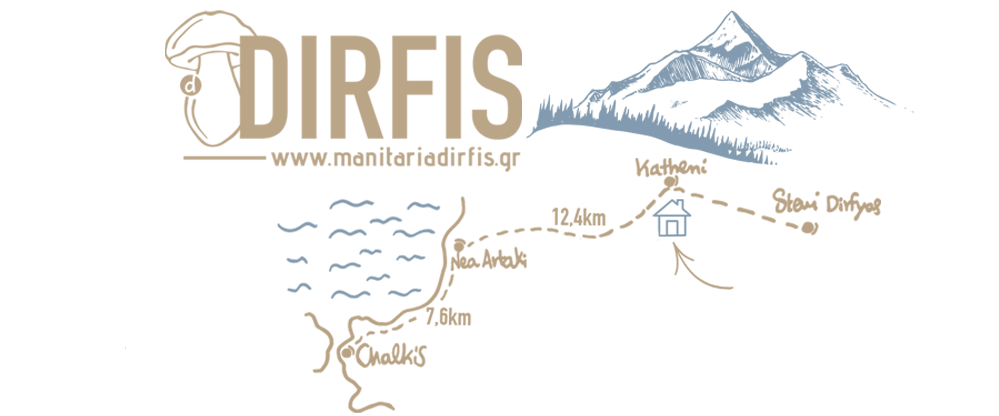- Details
- Written by Eva
- Category: products-en
- Hits: 2984
Fresh wild mushrooms
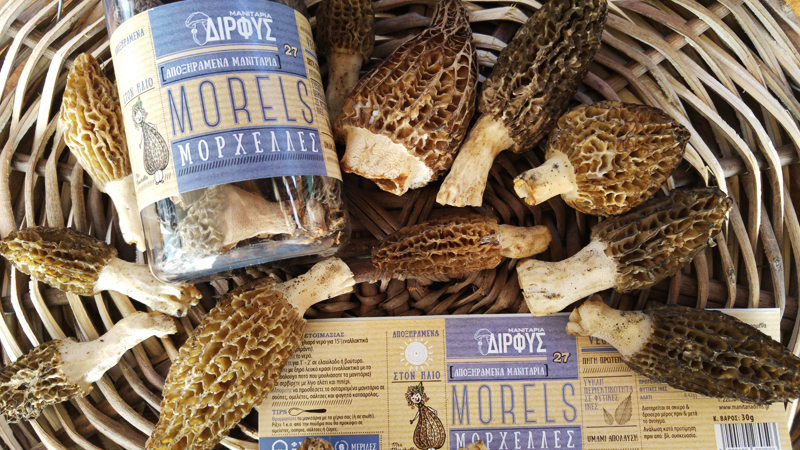
In regards to wild mushrooms,DIRFIS MUSHROOMS operates a well-organized network of trained pickers who collect mushrooms in natural fir, oak, and beech forests. DIRFIS MUSHROOMS conducts regular controls on random samples (wild and cultivated) in accordance with EU legislation on heavy metal contamination risks (EC1881/2006, EU2018/73) and pesticide residue levels (EC 299/2008), while fresh mushrooms are handled in accordance with the law Ν 2090/31/07/2014.
Greek wild mushrooms, like those found all over the world, appear and grow after rain. However, Greek mushrooms are collected under a Greek sun in a low humidity micro climate, a sun unlike any other: this sun allows us to collect our mushrooms dry and not muddy.
- Details
- Written by Eva
- Category: products-en
- Hits: 2162
Nutritional Value of Mushrooms
Mushrooms are fungi, which are so unique in nature that they are regarded as their own kingdom, different from plants and animals. Mushrooms, while usually classified as vegetables in dietary guidelines, are not vegetables due to their cellular arrangement and composition, which includes chitin and ergosterol.
Mushrooms are high in B vitamins like riboflavin, niacin, and pantothenic acid, which aid in energy production by breaking down proteins, lipids, and carbohydrates2. B vitamins play a crucial role in the neurological system. Pantothenic acid aids in hormone production as well as nervous system function2. Riboflavin promotes healthy red blood cells2. Niacin promotes healthy skin and ensures the digestive and neurological systems are functioning properly2.
Mushrooms also contain critical minerals:
Selenium is a mineral that acts as an antioxidant, protecting body cells from damage that could lead to heart disease, some malignancies, and other age-related diseases2. It has also been discovered to be vital for the immunological system.
Ergothioneine is a naturally occurring antioxidant that also may help protect the body’s cells. Mushrooms provide 2.8-4.9 mg of ergothioneine per serving of mushrooms.
Copper helps make red blood cells, which carry oxygen throughout the body. Copper also helps keep bones and nerves healthy2. Potassium is an important mineral many people do not get enough of. It aids in the maintenance of normal fluid and mineral balance, which helps control blood pressure. It also plays a role in making sure nerves and muscles, including the heart, function properly2.
Mushrooms have 98-376 mg of potassium per 84 gram serving, which is 3-11 percent of the Daily Value4.
Beta-glucans, found in numerous mushroom species, have shown marked immunity-stimulating effects, contribute to resistance against allergies and may also participate in physiological processes related to the metabolism of fats and sugars in the human body. The beta-glucans contained in oyster, shiitake and split gill mushrooms are considered to be the most effective6.
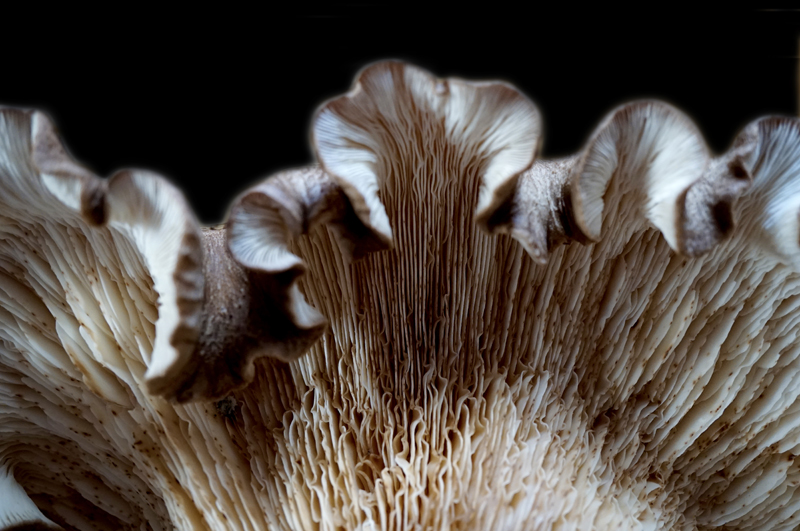
Antioxidants and Immunity
Mushrooms are the leading source of the essential antioxidant selenium in the produce aisle. Antioxidants, like selenium, protect body cells from damage that might lead to chronic diseases. They help to strengthen the immune system, as well2. In addition, mushrooms provide ergothioneine, a naturally occurring antioxidant that may help protect the body’s cells.
Weight Management/Satiety
Mushrooms are hearty and filling. Preliminary research suggests increasing intake of low-energy-density foods (meaning few calories given the volume of food), specifically mushrooms, in place of high-energy-density foods, like lean ground beef, can be an effective method for reducing daily energy and fat intake while still feeling full and satiated after the meal7.
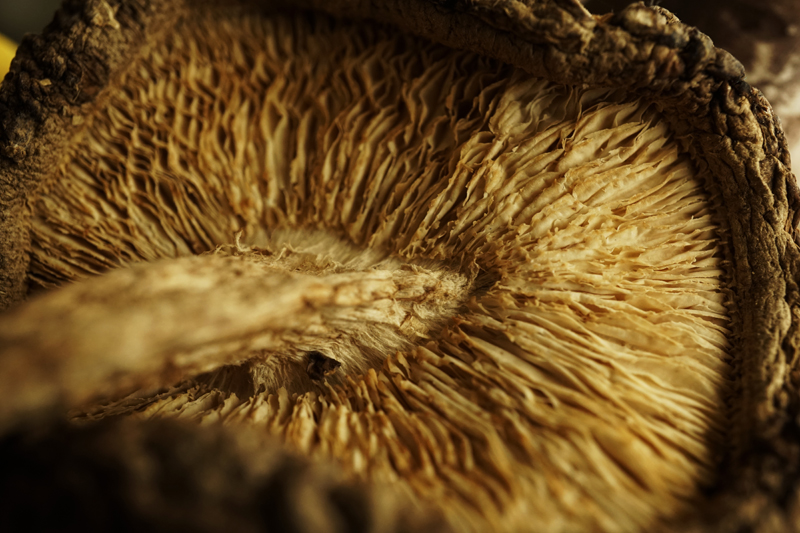
Mushrooms and vitamin D
Numerous scientific studies demonstrated the crucial role of vitamin D in human health since its absence is associated with osteoporosis, cardiovascular disease, diabetes, hypertension, multiple sclerosis, rheumatoid arthritis, tumor appearance, autoimmune disorders etc. Vitamin’s D deficiency is epidemic and constitutes a global health problem, which is mainly attributed to limited exposure to sunlight and consumption of food with low pertinent content.
Mushrooms are the only non-animal source of vitamin D, and they are also rich in several other essential constituents like β-glucans and antioxidants. Fungal cell walls contain ergosterol which is transformed through UV irradiation to ergocalciferol (vitamin D2); hence, mushroom consumption could replace vitamin D intake usually accomplished by food supplements or pills. The mushroom cultivation process is a controlled bioconversion (solid state fermentation) of a wide range of agricultural residues and agro-industrial by-products to edible biomass with high nutritional value. Of significant interest are recent research findings of this proposal’s participants, demonstrating that the composition of cultivation substrates exerts a significant effect on mushroom’s content in bioactive compounds.
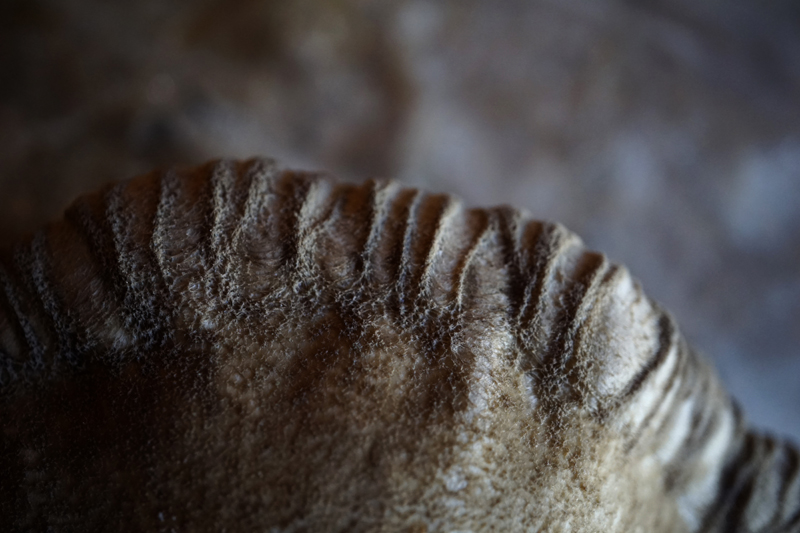
DIRFIS MUSHROOMS complies with the new Regulation (EU) No 1169/2011 concerning the disclosure of food information to consumers. The duty to disclose nutritional information began on December 13, 2016.http://eur-lex.europa.eu/legal-content/en/ALL/?uri=CELEX:32011R1169. DIRFIS MUSHROOMS data analysis takes place in a licensed laboratory. Furthermore, a wide range of other nutrients and vitamins are being studied at the universities with which we collaborate.
- Details
- Written by Eva
- Category: products-en
- Hits: 4136
Fresh Truffles
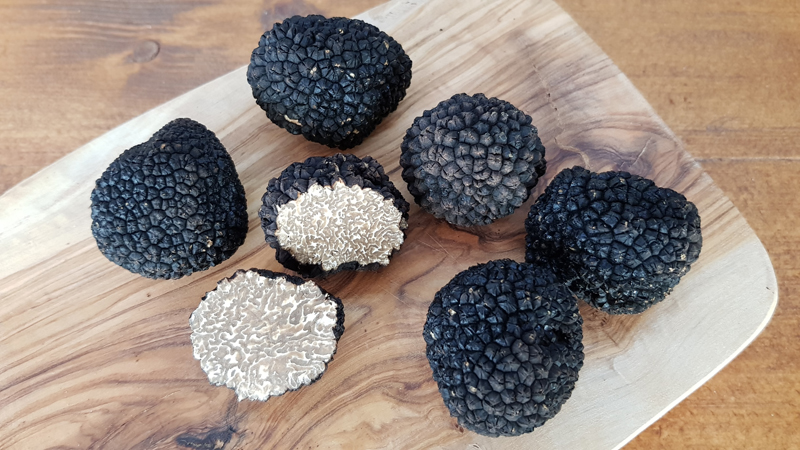
In Greece, the truffle has been known as "Ydnon" since antiquity. It was highly sought after due to its pharmaceutical and aphrodisiac properties, as well as its delicious flavour and aroma. It's no surprise that it inspired so many ancient poets and writers. Truffles were referred to as "children of the gods" by Porphyry, while Pliny regarded them as "natural marvels." Truffle has been used in culinary applications in Mediterranean countries since ancient Greece. The tubers used are called melanosporum, which is derived from the Greek words "melani" (black) and "sporum" (seed).
The truffle is not just a food, flavoring, or aroma. The truffle is a combination of all of these elements. Nothing compares to the sensation you get when you take your first bite: a delicious pleasure that awakens the senses, a state of intoxication that you wish would never end. The truffle stimulates our fifth 'taste', umami, which our tongue possesses specifically for the purpose of appreciating culinary marvels like the truffle. The first traces of truffles appeared thousands of years ago, sometime between the Babylonian culture (3000 B.C.) and the ancient Egyptians, and then reappear in ancient Greece and the Roman Empire: but that ancient object of desire was not any of the black and white truffles. (Tuber magnatum e T. melanosporum), that we know today, but ‘common’ hypogeous mushrooms, terfez or sand truffles (Choiromyces meandriformis).
Aristotle (6th century B.C.) had already spread the word that truffles had a positive effect on man's amorous abilities, so they became a 'fruit' dedicated to Aphrodite, the Roman goddess of love. The Romans saw it as an aphrodisiac, a "filter through which to have their way with women." Meanwhile, scientific interest started growing. The Greek botanist Theophrastes was the first to describe the botanical nature of the truffle as an "organism devoid of roots, originating from autumn rains accompanied by bolts of lightning sent by Jupiter." The mystery of how truffles are born will continue for centuries.
After a long period of medieval truffle silence, during which the truffle fell victim to its own aphrodisiac reputation and was thus deemed unsuitable for everyday monastic life, Italy and France finally discovered authentic, prized back and white truffles with the arrival of the refined and cultured Renaissance era. Catherine de Medici, wife of Henri II of France, served them as a star ingredient at her legendary feasts in Florence and Paris. The prized black truffle was a favorite of France's kings beginning with the Sun King Louis XIV. The playwright Molière was so fond of them that he dedicated a well-known play to them: Tartuffe.
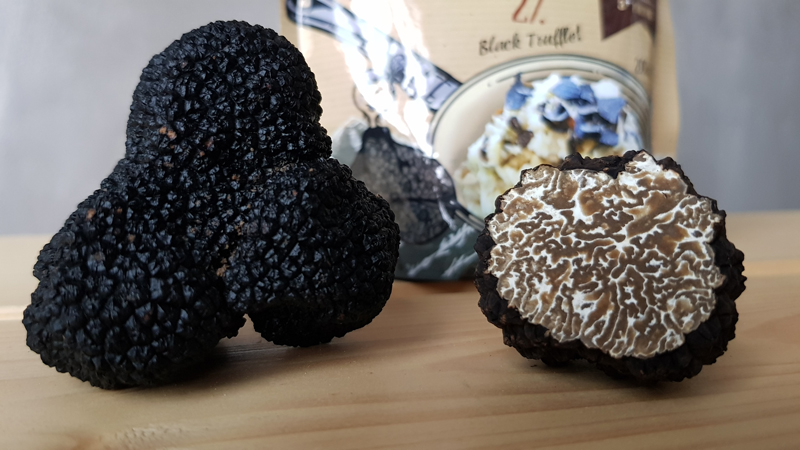
Our Wild growing Greek truffles are packed and send max 2 days after harvesting. We can send worldwide by DHL.
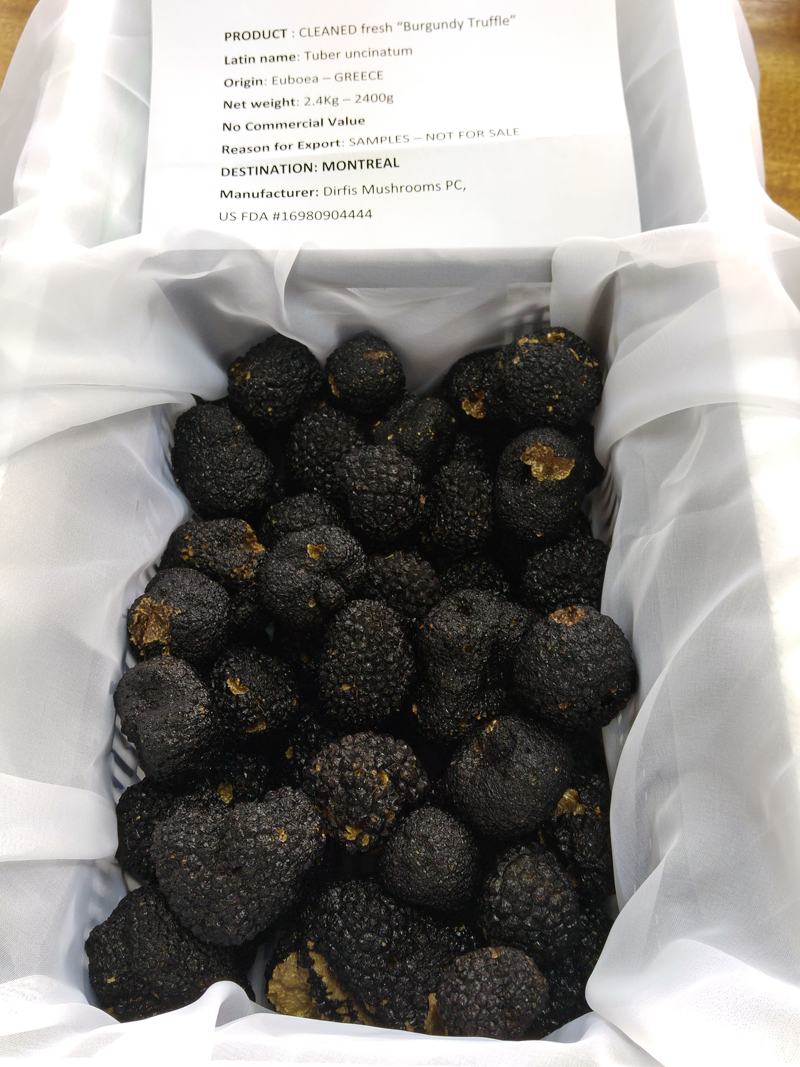
- Details
- Written by Eva
- Category: products-en
- Hits: 3972
Incubated Pleurotus Substrate

DIRFIS MUSHROOM is a vertically integrated spawn producer, selling only what we cultivate. At our facilities, based at the base of Mount Dirfis on the island of Evia, we test our strains, substrates, and supplements under a variety of growth circumstances. Our highly deveoped greenhouses produce mushroom spawn once it has been approved by growers, for sale. Every facility was created especially to provide reliable mushroom spawn and, most importantly, aid in your growth. Whether you're a DIY mushroom producer in Greece or a small size mushroom farmer, get in touch with us today to find out how you may get the quantity you require. We have established DIRFIS MUSHROOMS also, as and Exporter of incubated Pleurotus substrate and provide mushroom cultivation consultation and offer a comprehensive range of services that cater to every aspect of mushroom farming, providing guidance and assistance throughout the process.
SPECIFICATIONS OF THE OYSTER MUSHROOM SUBSTRATE






























